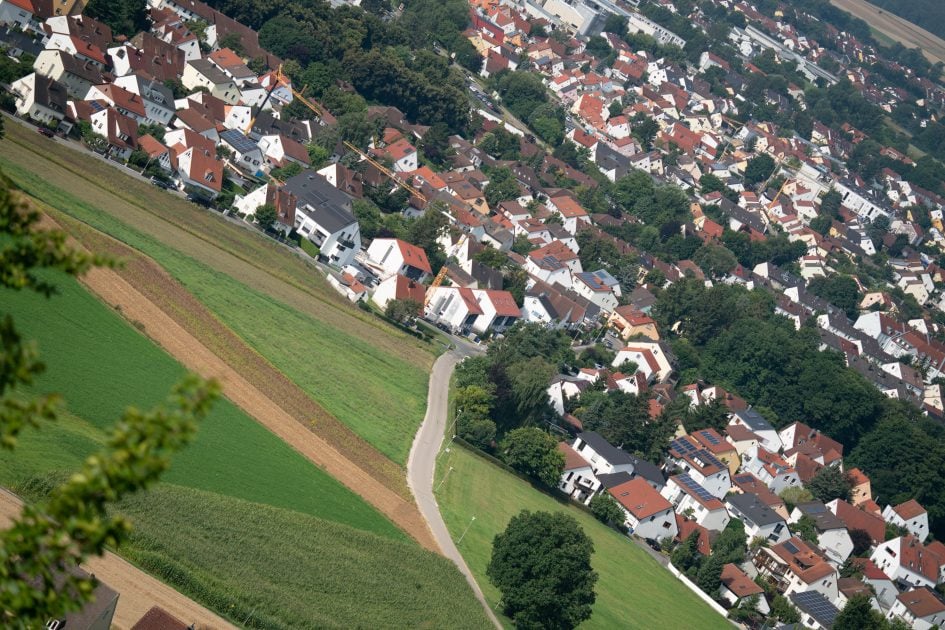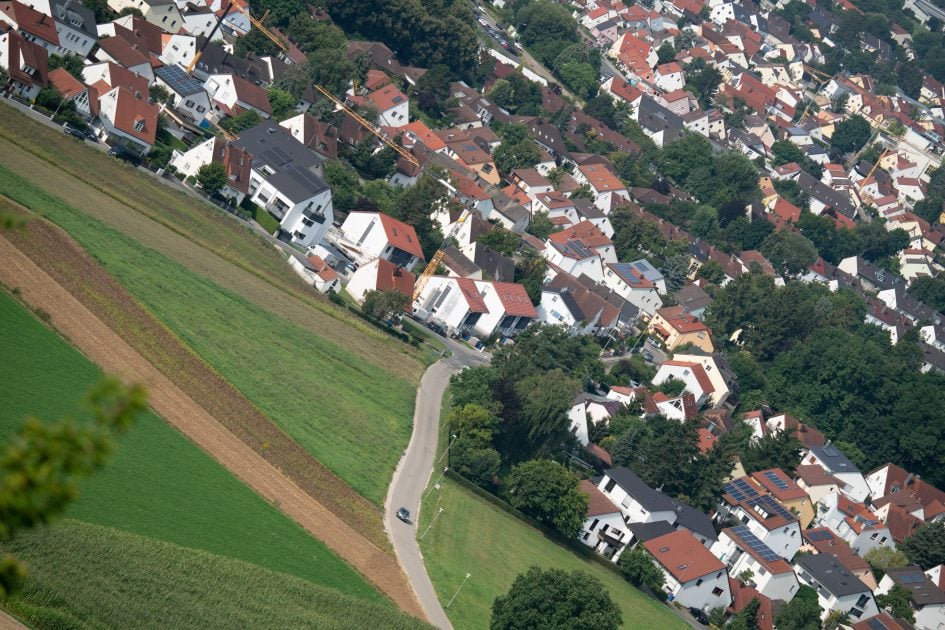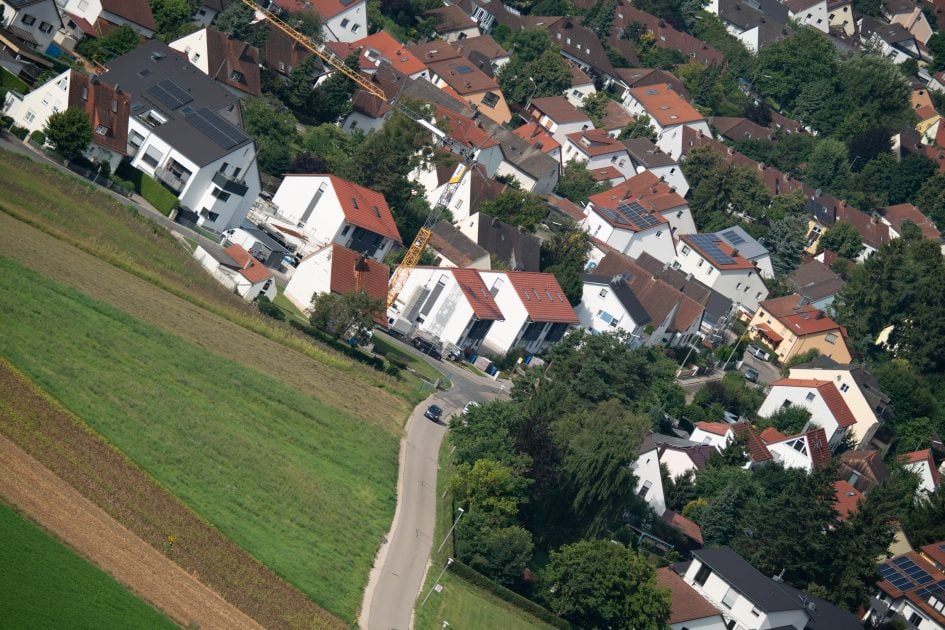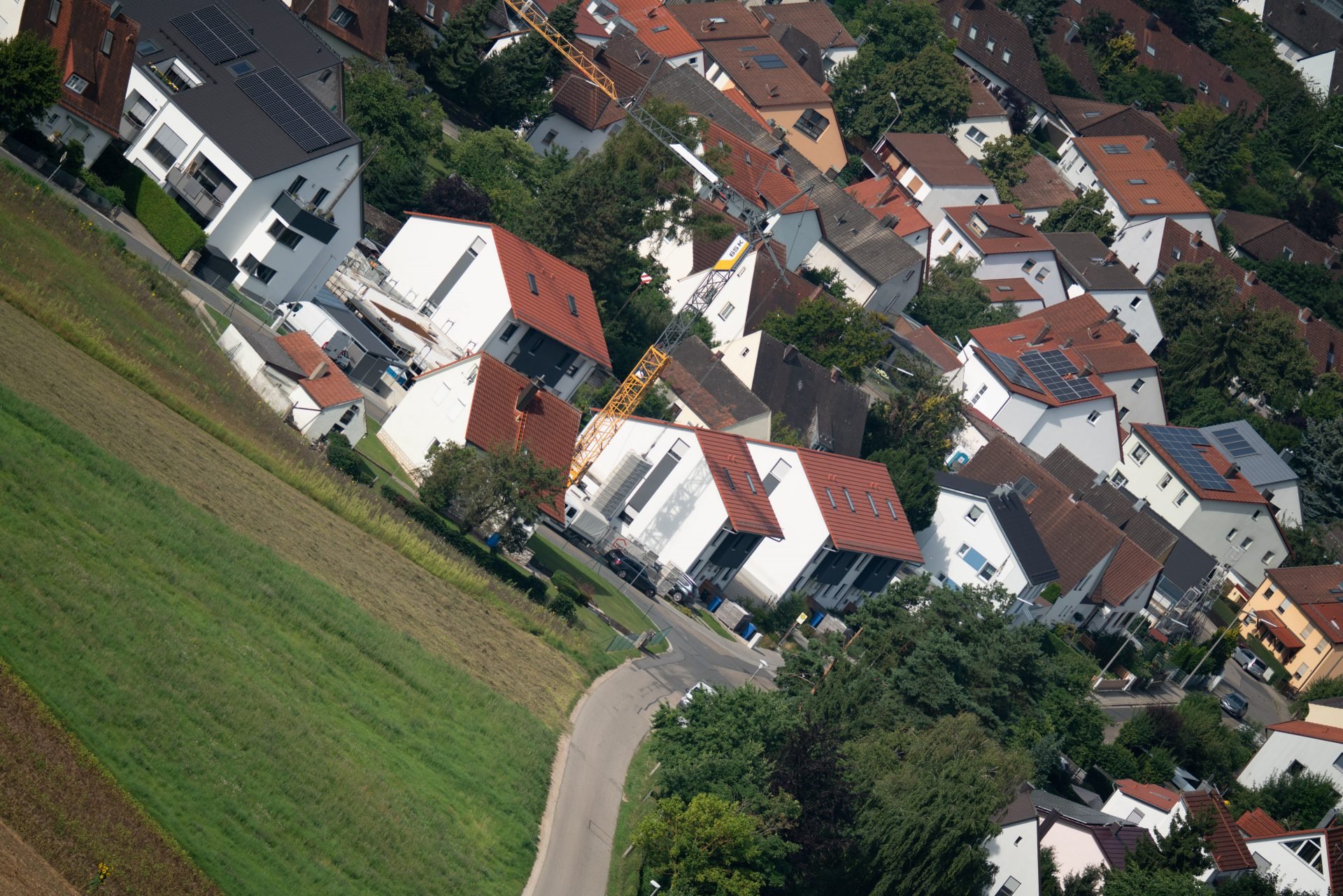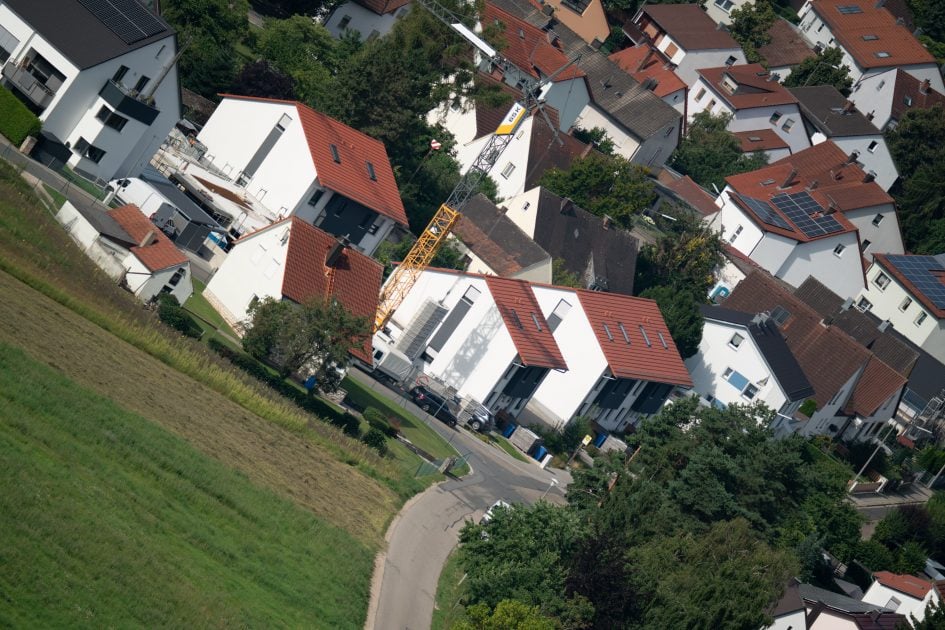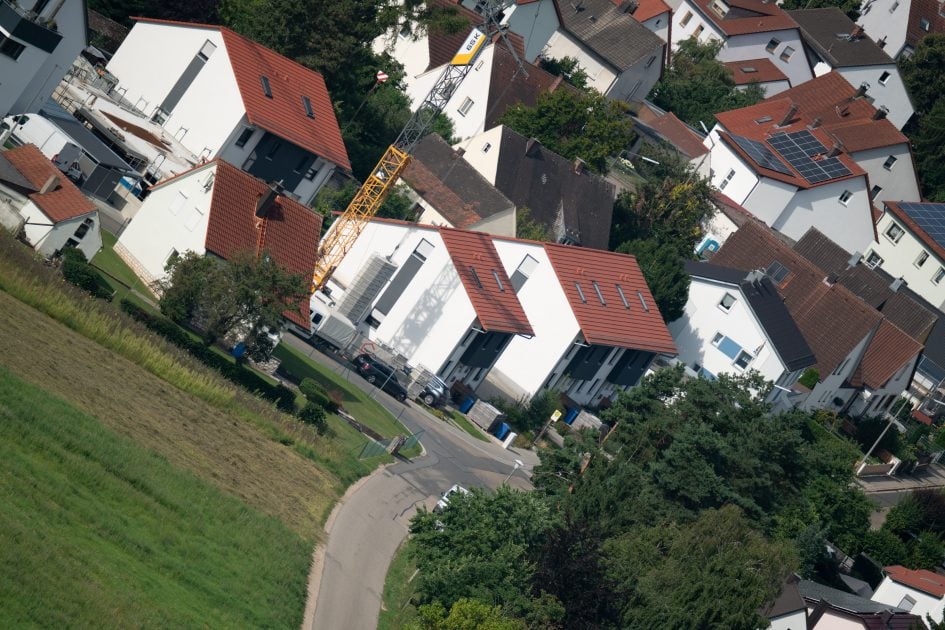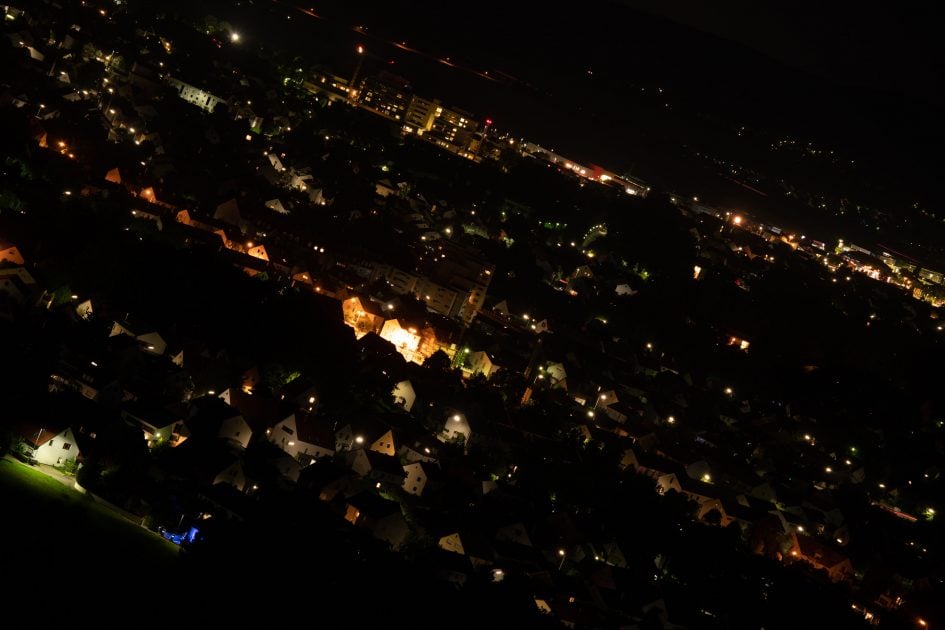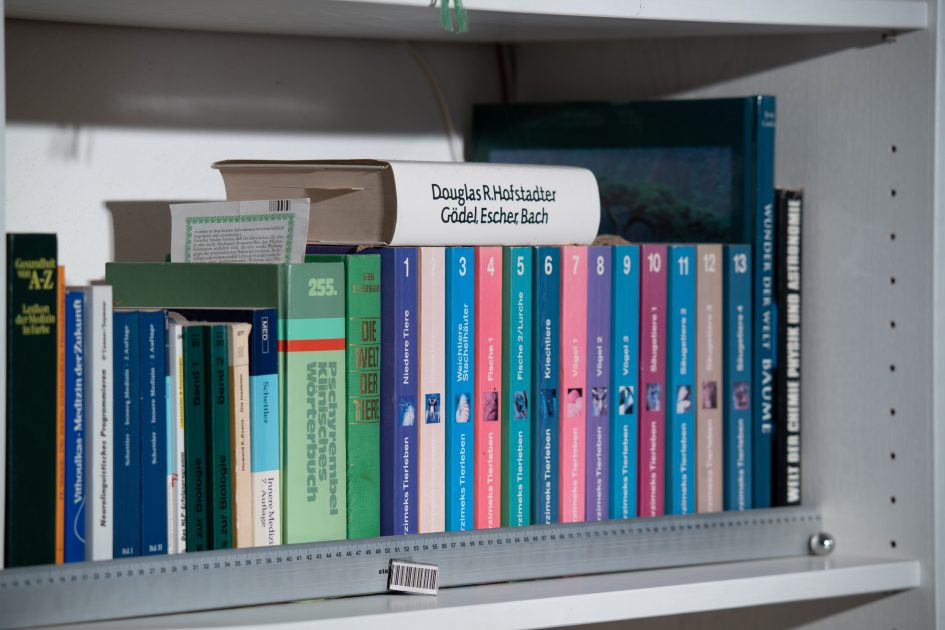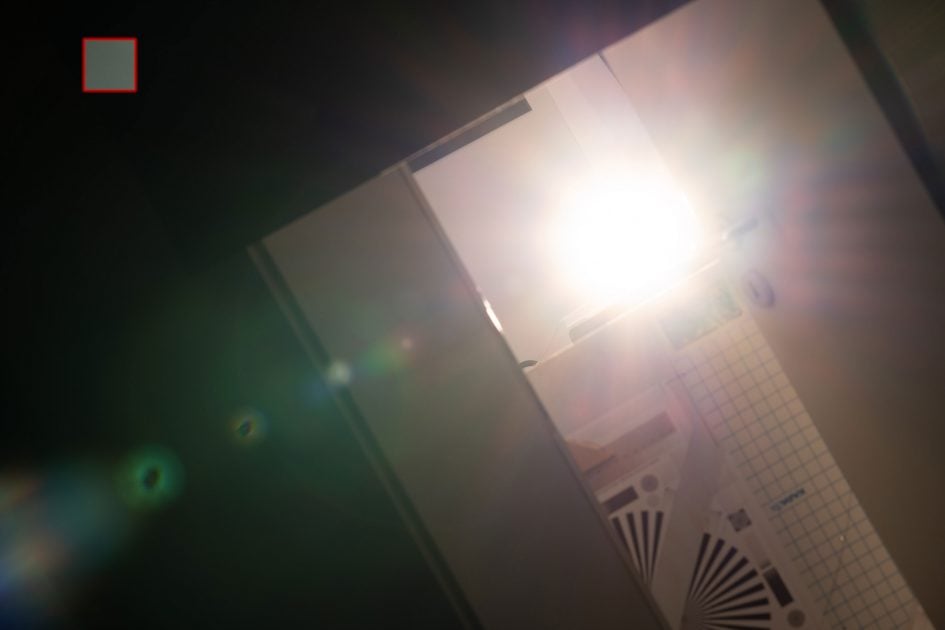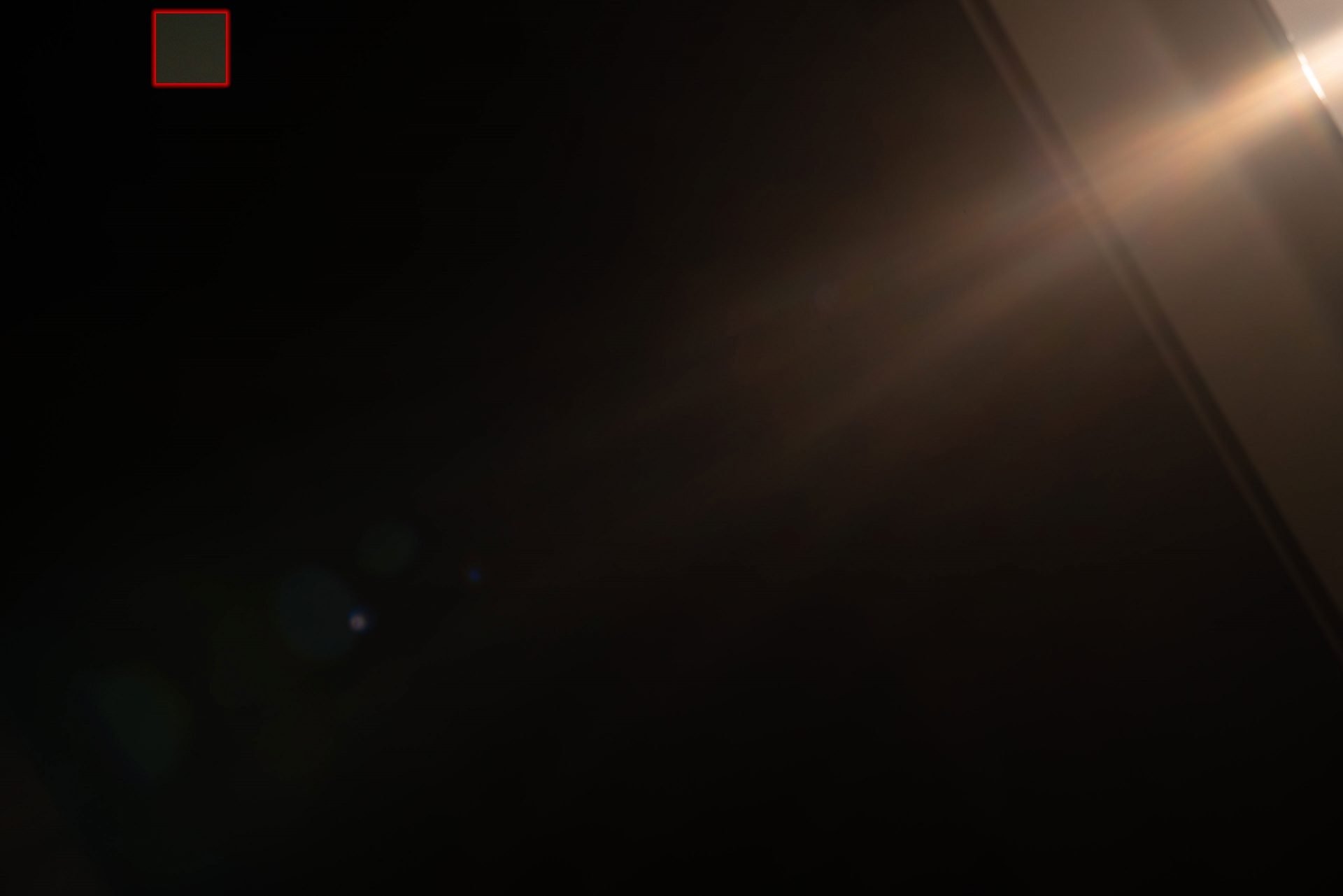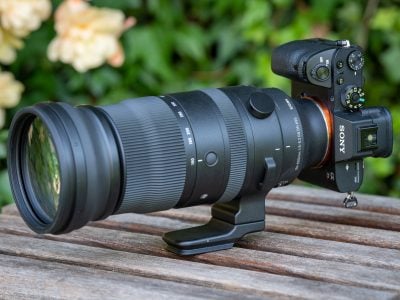Sigma 150-600mm f5-6.3 DG DN OS review
-
-
Written by Thomas
Quality
Testing: Three faulty copies of the lens
When I started testing the lens everything looked OK until I used the lens in portrait orientation. It became immediately clear that corner sharpness was significantly worse (at focal lengths of 300mm and longer) than in landscape orientation. I got another two copies of the lens directly from Sigma which showed more or less the same problem. Here’s an example from my third copy shot at around 400mm focal length:
Sigma 150-600mm f5-6.3 DG DN OS: The Portrait Problem
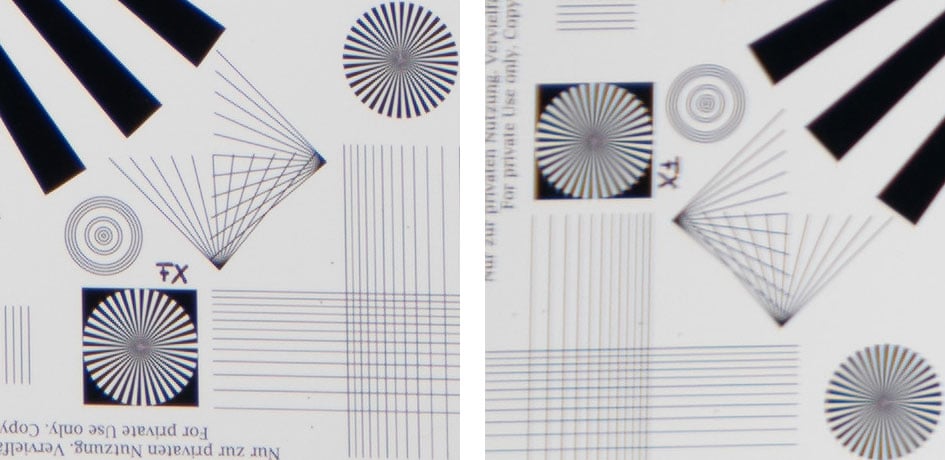
100% crops at f6.3; left = landscape orientation, right = portrait orientation
Both shots were focused manually for optimal sharpness of the corner crop, shot from a heavy tripod with image stabilization switched off. As you can see turning the lens by 90 degrees around its optical axis has a devastating effect on corner sharpness. The lens develops quite some astigmatism which hints at a lens group tilting from its optimal position when the lens is turned. That 3 out of 3 lenses showed the same effect might also indicate that this problem affects more than just a few individual copies. My advice: If you buy this lens make sure your copy is not affected.
That being said: When the lens is used in landscape orientation its optical performance is very good as my following tests are proof of. So I really hope that Sigma is able to identify and eliminate the root cause of this problem.
Longitudinal Chromatic Aberration and focus shift
Although the Sigma 150-600mm f5-6.3 DG DN OS has a focal ratio of only f5.0 at the short end I tested for longitudinal color aberrations (loCA, a.k.a. “axial color” or “bokeh CA”). These normally show up as magenta coloration in the foreground and greenish hues in the background and are not easily corrected in post-processing. The new Sigma has very little loCA and there’s no discernible focus shift when the lens is stopped down to f8.0.
Sigma 150-600mm f5-6.3 DG DN OS Longitudinal Chromatic Aberration (loCA)
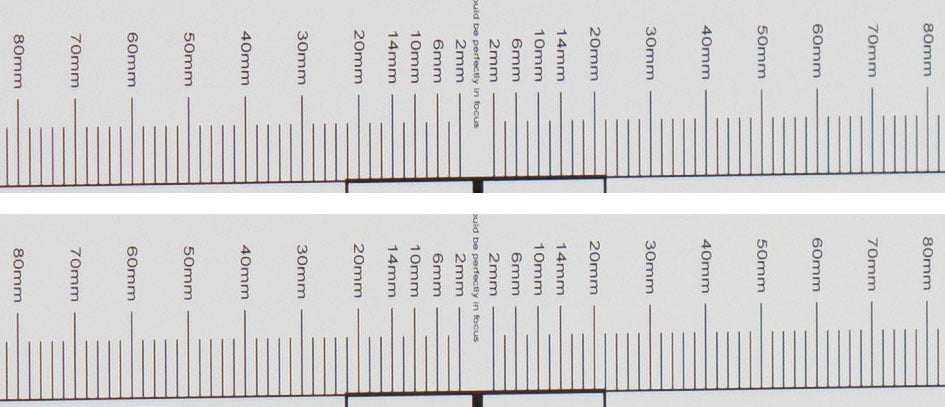
100% crops at 220mm f5.6 (top), f8.0 (bottom); left = foreground, right = background
Sharpness and contrast
Let’s have a look at the theoretical performance of the new Sigma 150-600mm f5-6.3 DG DN OS and compare it to some other lenses:
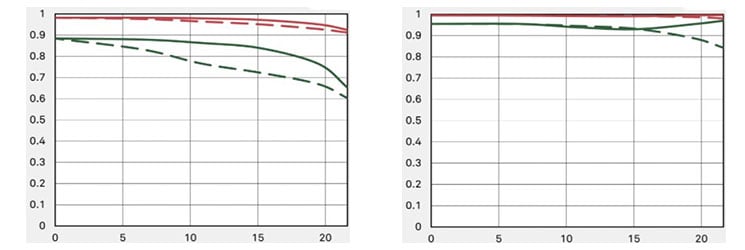
Above: Sigma 150-600mm f5-6.3 DG DN OS, 150mm f5.0 (left), 600mm f6.3 (right)
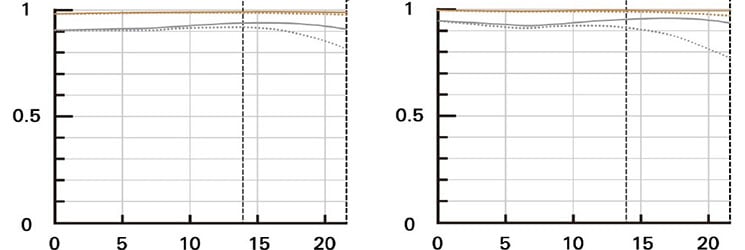
Above: Tamron 150-500mm f5-6.7 Di III VC, 150mm f5.0 (left), 500mm f6.7 (right)
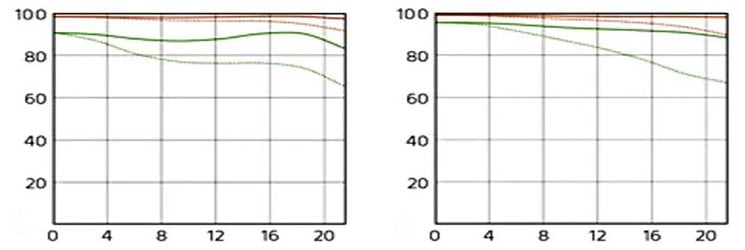
Above: Sony FE 200-600mm f5.6-6.3 G OSS, 200mm f5.6 (left), 600mm f6.3 (right)
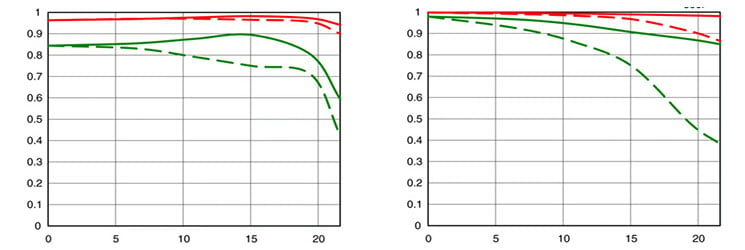
Above: Sigma 150-600mm f5-6.3 DG OS HSM Sports, 150mm f5.0 (left), 600mm f6.3 (right)
These MTF charts show the computed lens-performance of lenses wide open without influence of diffraction at 10 line-pairs/mm (red) and 30 lp/mm (blue/green). Higher values are better (more contrast) and the closer the dotted and solid lines are together the less contrast dependents on the orientation of the test-pattern (less astigmatism). The x-axis displays the distance from the optical axis (=center of the sensor) in mm.
The Sigma 150-600mm f5-6.3 DG DN OS looks very good in these charts – especially on the long end: Sharpness at 600mm is very high right up into the extreme corners with only little astigmatism – better (on paper) than the other lenses shown above. Only the short end looks a little softer – especially compared to the Tamron 150-500.
Let’s see how this theoretical performance translates into real life results in the sharpness test based on Siemens-stars. Processing was done in Lightroom 11.0/CRAW 14.0 from RAW to Adobe Color profile with the built-in lens profile compensating CA and vignetting. Noise-reduction is set to 0, sharpening to 50/0.5/36/10, with no extra tone, color, or saturation adjustment. White-balance was adjusted to a neutral white and I did some exposure compensation to make the brightness of all crops match. So you will not see light fall-off in the corners.
The following are all 100% crops!
First up is an overview of the wide-open performance at different focal lengths. You can jump to the detailed results at different apertures by clicking on the crops of the respective focal length.
Sigma 150-600mm f5-6.3 DG DN OS; 100% crop from center, APS-C-corner, FF-corner
Above: 150mm, f5.0
Above: 200mm, f5.6
Above: 300mm, f5.6
Above: 450mm, f6.3
Above: 600mm, f6.3
This is quite impressive: Sigma’s new zoom lens performs very good over all of its 4x zoom range across the high resolution full-frame sensor. It does not show the usual softening towards the long end that other telephoto zooms often exhibit and the extreme (FF) corner also shows good resolution. The test also revealed that the lens has almost no field curvature: the crops from 300mm focal length onwards are all from the same shot – there was no need to re-focus.
The following 100% crops for each focal length show the Sigma 150-600mm f5-6.3 DG DN OS from wide open down to f11 compared to the Tamron 150-500mm f5-6.7 Di III VC wide open. Or you can fast-forward to the performance at long distances.
Performance at 150mm:
Sigma 150-600mm f5-6.3 DG DN OS compared at 150mm; 100% crop from center, APS-C-corner, FF-corner

Above: Sigma 150-600mm f5-6.3 DG DN OS at 150mm, f5.0

Above: Tamron 150-500mm f5-6.7 Di III VC at 150mm, f5.0; also available at f5.6, f8.0, f11

Above: Sigma 150-600mm f5-6.3 DG DN OS at 150mm, f5.6

Above: Sigma 150-600mm f5-6.3 DG DN OS at 150mm, f8.0; also available at f11
Performance at 200mm:
Sigma 150-600mm f5-6.3 DG DN OS compared at 200mm; 100% crop from center, APS-C-corner, FF-corner

Above: Sigma 150-600mm f5-6.3 DG DN OS at 200mm, f5.6

Above: Tamron 150-500mm f5-6.7 Di III VC at 200mm, f5.0; also available at f5.6, f8.0, f11

Above: Sigma 150-600mm f5-6.3 DG DN OS at 200mm, f8.0

Above: Sigma 150-600mm f5-6.3 DG DN OS at 200mm, f11
Performance at 300mm:
Sigma 150-600mm f5-6.3 DG DN OS compared at 300mm; 100% crop from center, APS-C-corner, FF-corner

Above: Sigma 150-600mm f5-6.3 DG DN OS at 300mm, f5.6

Above: Tamron 150-500mm f5-6.7 Di III VC at 300mm, f5.6; also available at f8.0, f11

Above: Sigma 150-600mm f5-6.3 DG DN OS at 300mm, f8.0

Above: Sigma 150-600mm f5-6.3 DG DN OS at 300mm, f11
Performance at 450mm:
Sigma 150-600mm f5-6.3 DG DN OS compared at 450mm; 100% crop from center, APS-C-corner, FF-corner

Above: Sigma 150-600mm f5-6.3 DG DN OS at 450mm, f6,3

Above: Tamron 150-500mm f5-6.7 Di III VC at 400mm, f6.3; also available at f8.0, f11

Above: Sigma 150-600mm f5-6.3 DG DN OS at 450mm, f8.0

Above: Sigma 150-600mm f5-6.3 DG DN OS at 450mm, f11
Performance at 600mm:
Sigma 150-600mm f5-6.3 DG DN OS compared at 600mm; 100% crop from center, APS-C-corner, FF-corner

Above: Sigma 150-600mm f5-6.3 DG DN OS at 600mm, f6.3

Above: Tamron 150-500mm f5-6.7 Di III VC at 500mm, f6.7; also available at f8.0, f11

Above: Sigma 150-600mm f5-6.3 DG DN OS at 600mm, f8.0

Above: Sigma 150-600mm f5-6.3 DG DN OS at 600mm, f11
Sigma’s 150-600mm f5-6.3 DG DN OS zoom lens clearly bests the Tamron 150-500mm f5-6.7 Di III VC especially at the longer focal lengths. Taking into account that I compared the Sigma at 450mm and 600mm to the Tamron at 400mm and 500mm this makes the results even more impressive: At the long end the Sigma provides 20% more magnification/reach and delivers a sharper image than the Tamron. Stopping down to f8 does not yield much of an improvement so you can confidently use the Sigma wide open.
Performance at long distances
The Siemens-star test-targets are shot at a distance of 45x focal length (i.e. at around 9m for 200mm focal length). But performance of lenses also depends on the shooting distance. Therefore I did another series of test-shots of a city around 1 km away. Processing was done in Lightroom 10.3/CRAW 13.3 from RAW to Adobe Color profile with the built-in lens profile compensating CA and vignetting. Noise-reduction is set to 0, sharpening to 50/0.5/36/10, with no extra tone, color, or saturation adjustment. All shots were made from a heavy tripod with image stabilization switched off. ISO was set to 200 to keep shutter speeds around 1/1000. As usual I have selected the diagonal that provided the better corner results as the lens was a bit decentered.
The following images show the complete scene wide open to give you an impression of the angle of view. Following each main image are 100% crops from the center, APS-C-corner, and FF-corner from the Sigma 150-600mm f5-6.3 DG DN OS compared to the Tamron 150-500mm f5-6.7 Di III VC. The Tamron was shot another day with similar atmospheric conditions but stronger heat shimmer. You can access the large originals but please respect our copyright and only use those images for personal use.
Sigma 150-600mm f5-6.3 DG DN OS compared; 100% crop from center, APS-C-corner, FF-corner
Above: Sigma 150-600mm f5-6.3 DG DN OS at 150mm, f5.0; click image for 4k version, here for large original
Above: Tamron 150-500mm f5-6.7 Di III VC at 150mm, f5.0; click image for 4k version, here for large original
Above: Sigma 150-600mm f5-6.3 DG DN OS at 200mm, f5.6; click image for 4k version, here for large original
Above: Tamron 150-500mm f5-6.7 Di III VC at 200mm, f5.0; click image for 4k version, here for large original
Above: Sigma 150-600mm f5-6.3 DG DN OS at 300mm, f5.6; click image for 4k version, here for large original
Above: Tamron 150-500mm f5-6.7 Di III VC at 300mm, f5.6; click image for 4k version, here for large original
Above: Sigma 150-600mm f5-6.3 DG DN OS at 400mm, f6.3; click image for 4k version, here for large original
Above: Tamron 150-500mm f5-6.7 Di III VC at 400mm, f6.3; click image for 4k version, here for large original
Above: Sigma 150-600mm f5-6.3 DG DN OS at 500mm, f6.3; click image for 4k version, here for large original
Above: Tamron 150-500mm f5-6.7 Di III VC at 500mm, f6.7; click image for 4k version, here for large original
Above: Sigma 150-600mm f5-6.3 DG DN OS at 600mm, f6.3; click image for 4k version, here for large original
Throughout the zoom range the Sigma 150-600mm f5-6.3 DG DN OS indeed performs very well. Only the FF-corner looks a bit soft at 150mm focal length. But the corner sharpens up nicely at 200mm already and is looking very good from 300mm focal length onwards until it softens again a little bit at 600mm. The Tamron 150-500mm f5-6.7 Di III VC in comparison has the advantage in the FF-corner at the short end but starts looking softer overall than the Sigma from 400mm onwards (may be due to heat shimmer).
Vignetting and distortions
To make it easier to see light fall-off in the corners of a full-frame sensor I’ve arranged a series of three shots each with the Sigma 150-600mm f5-6.3 DG DN OS from f5.0 to f8.0 at 150mm and f6.3-f11 at 600mm focal length. All images were developed to the same brightness in the center and with the built-in lens profile compensating vignetting:
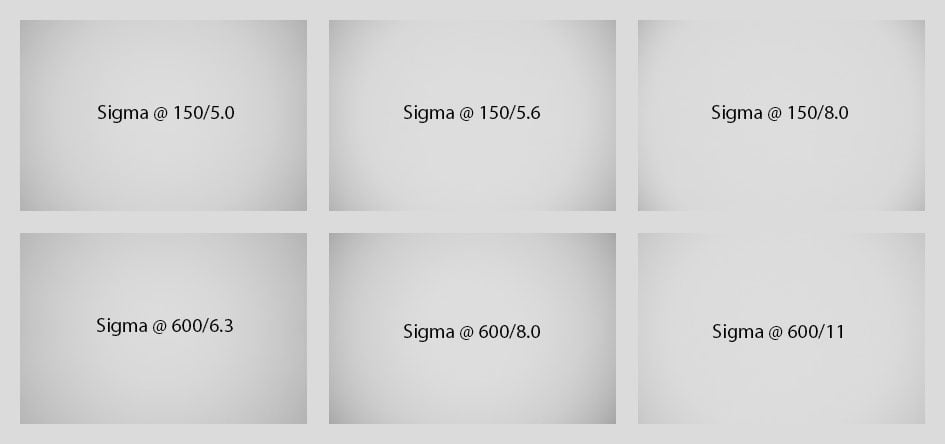
Above: Sigma 150-600mm f5-6.3 DG DN OS at 150mm and 600mm focal length; shading compensation = Auto
The sample images above show that with the lens profile applied vignetting is pretty mild. Adobe’s RAW converter automatically applies shading compensation as it was set in camera – but you cannot alter the setting in postprocessing.
Distortions are of pin-cushion type at every focal length. The setting for distortion compensation in camera is currently ignored by Adobe’s RAW converter and treated as OFF but there is a lens profile for the new Sigma in Lightroom 14.0 / CRAW 11.0. Just make sure to dial shading compensation from the lens profile back a bit if it was already activated in camera! The following composite images show a roof rail at the upper border of the full-frame image at various focal lengths first without distortion compensation and then with compensation from the built-in lens profile switched on:
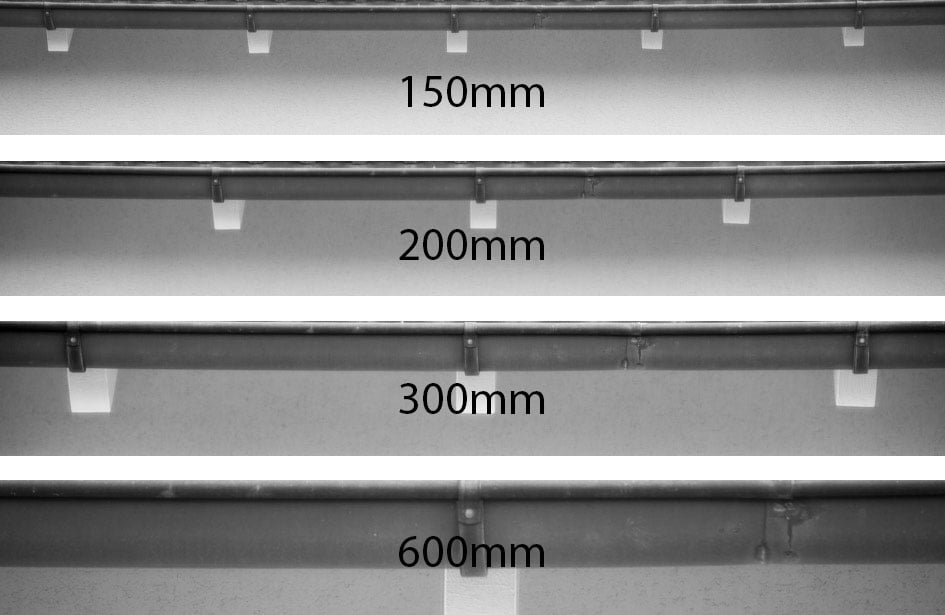
Distortions: Sigma 150-600mm f5-6.3 DG DN OS at 150/200/300/600mm, distortion compensation Off
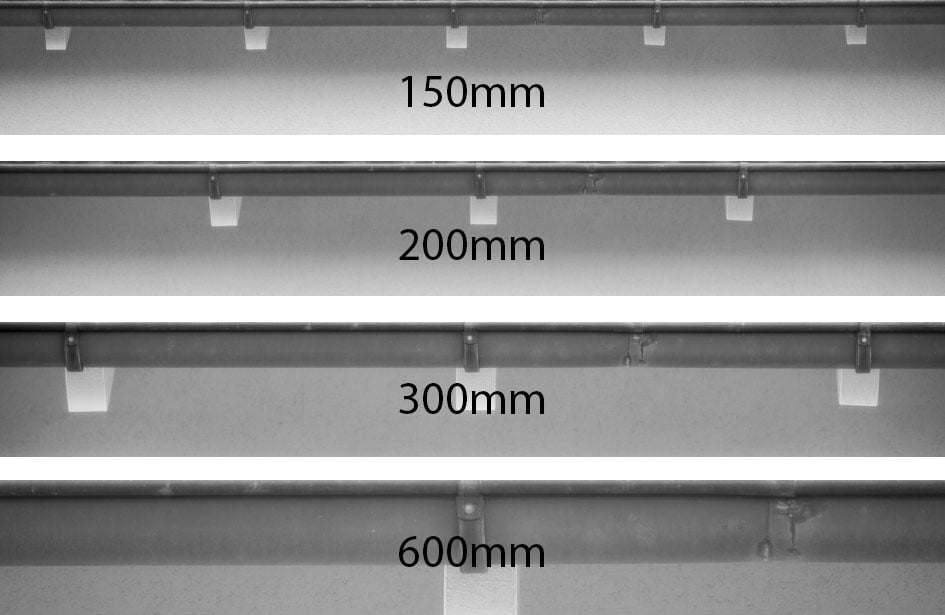
Distortions: Sigma 150-600mm f5-6.3 DG DN OS at 150/200/300/600mm, distortion compensation On
As you can see distortion compensation works pretty well when applied in camera to JPGs and the same holds true for Adobes lens profile applied to RAW files.
Rendering of point-light sources at night-shots
Night-shots pose a different challenge for lenses as the contrast is even higher than under bright sun and point-light sources can reveal some weaknesses such as coma, haloing and colour-aberrations that do not show up as prominently in other test-shots. The 100% crops below the main image show the effect of coma near the FF-corner of the Sigma 150-600mm f5-6.3 DG DN OS:
Above: Sigma 150-600mm f5-6.3 DG DN OS at 150mm, f5.0; click image for 4k version, here for large original

Above: Sigma 150-600mm f5-6.3 DG DN OS at 150mm; 100% crops from the FF-border at f5.0 (left), f5.6 (middle), f8.0 (right)
The lens is practically free of coma and it shows only slightly colored haloes around bright lights.
Bokeh quality
This test is for the rendering of point-light sources in an out-of-focus background. The circle of confusion that is produced by this test is pretty indicative of Bokeh performance (in the background) and light fall-off. Ideally the out-of-focus image of the point-light is evenly lit and perfectly circular, with no “onion-rings”, and without coloration. There’s also an effect known as “cat’s eye” the further away from the optical axis the point-light is projected. This is due to optical vignetting in the lens barrel when light enters the lens from an angle.
The images were shot at the longest focal length. Crops are from the center, APS-C-corner, and FF-corner resized to make them comparable across all my reviews.
Above: Sigma 150-600mm f5-6.3 DG DN OS at 600mm, f6.3
Above: Sigma 150-600mm f5-6.3 DG DN OS at 600mm, f6.3; click image for 4k version

Above: Sigma 150-600mm f5-6.3 DG DN OS at 600mm, f8.0

Above: Sigma 150-600mm f5-6.3 DG DN OS at 600mm, f11
The diameter of the Bokeh balls in the center is determined by the entrance pupil of the lens which is 95mm for the Sigma 150-600mm f5-6.3 DG DN OS. This is the same for the Sony 200-600 and quite a bit larger than the 75mm for the Tamron 150-500 (at their respective longest focal length and largest aperture). The Bokeh balls from the Sigma are pretty smooth inside and free of onion-rings but show some outlining especially at the APS-C-corner – but without coloration from loCA. Compression of the circle towards the corners is clearly visible and could lead to “swirly Bokeh” especially since you’d want to use this lens wide open.
Now let’s see how this analysis of out-of-focus point-light sources translates into Bokeh-performance shooting a book-shelf. Crops are from the foreground, middle-ground, and background resized to make them comparable across all my reviews. I used the longest focal length that I could to produce a comparable shot to my other reviews which was in the case of the new Sigma 179mm.
Above: Sigma 150-600mm f5-6.3 DG DN OS at 179mm, f5.6
Above: Sigma 150-600mm f5-6.3 DG DN OS at 179mm, f5.6; click image for 4k version, here for large original
Bokeh is not very pronounced with these settings. It looks nervous in the foreground but shows a smooth transition zone free of color artifacts or double contours (see below). The background looks smooth. Some of the images on the following samples page clearly show a nice background Bokeh when shooting at closer distances.
Above: Sigma 150-600mm f5-6.3 DG DN OS at 179mm, f5.6; 100% crop; click image for 4k version, here for large original
Close-up performance
The Sigma 150-600mm f5-6.3 DG DN OS achieves a pretty decent maximum magnification of around 1:2.5 in close-up shooting. The first set of images were shot 150mm focal length and 1:4 magnification where the area of sharp focus is just 144 x 96mm. The crops shown below are from 0mm, 14mm, and 20mm off the center of the sensor respectively.

Above: Sigma 150-600mm f5-6.3 DG DN OS at 150mm, f5.0; 100% crops

Above: Sigma 150-600mm f5-6.3 DG DN OS at 150mm, f8.0; 100% crops

Above: Sigma 150-600mm f5-6.3 DG DN OS at 150mm, f11; 100% crops
The lens is moderately sharp in the center wide open. But for a larger area of good sharpness you need to stop down to at least f11. Sharpness is clearly effected by field-curvature so you could achieve sharper results outside the center by specifically focusing there. See the following example shot at f8, where the crops at 14mm and 20mm image height were separately focused. This is better but still not very satisfying:

Above: Sigma 150-600mm f5-6.3 DG DN OS at 150mm, f8; 100% crops
Using the lens at 600mm focal length produces better results outside the center with much less field-curvature. But still stop down to f11 for sharper detail across the sensor. The following images were shot at 1:4.9 magnification with crops from 0mm, 14mm, and 20mm off the center of the sensor respectively:

Above: Sigma 150-600mm f5-6.3 DG DN OS at 600mm, f6.3; 100% crops

Above: Sigma 150-600mm f5-6.3 DG DN OS at 600mm, f8.0; 100% crops

Above: Sigma 150-600mm f5-6.3 DG DN OS at 600mm, f11; 100% crops
Flare, ghosting, and sun-stars
Catching a strong light-source shining directly into the lens is always a risky business: it could produce strange colorful ghost-images or reduce contrast considerably through flare and glare. The appearance of flare and ghosting depends on factors like the aperture and the angle of the light hitting the lens. So to judge the proclivity of the Sigma 150-600mm f5-6.3 DG DN OS for these artifacts I went through a series of well calculated shots against a strong light source to provoke glare and ghosting. The lens hood was mounted in all shots. Following are just two of the more extreme examples. The little bright square inset in the upper left shows the respective area with an exposure compensation of +3 EV to make it easier to see which levels of black the lens renders at that point:
Above: Strong light hitting the Sigma 150-600mm f5-6.3 DG DN OS at 150mm, f11; click image for 4k version or here for +3 EV exposure compensation
Above: Strong light hitting the Sigma 150-600mm f5-6.3 DG DN OS at 150mm, f5.0; click image for 4k version or here for +3 EV exposure compensation
The Sigma 150-600mm f5-6.3 DG DN OS produces some very visible ghosting artifacts and overall contrast is considerably reduced through veiling glare when the light source is within the full-frame image-circle. But although the lens also produces a flare when the light source is just outside the corner veiling glare in this case is not as bad as from the Tamron 150-500mm f5-6.7 Di III VC.
Sunstars start to form at f5.6 but stopping down to f8 makes them even less well defined:

Above: Sunstars from the Sigma 150-600mm f5-6.3 DG DN OS at 150mm, f5.6 (left), f8.0 (right), 100% crops
Next check out my sample images!
Check prices on the Sigma 150-600mm f5-6.3 DG DN OS at B&H, Adorama, WEX UK or Calumet.de. Alternatively get yourself a copy of my In Camera book or treat me to a coffee! Thanks!